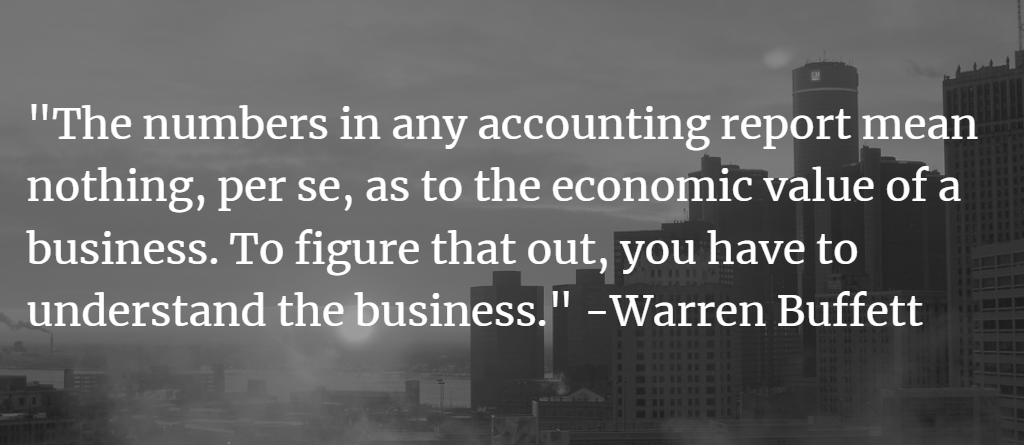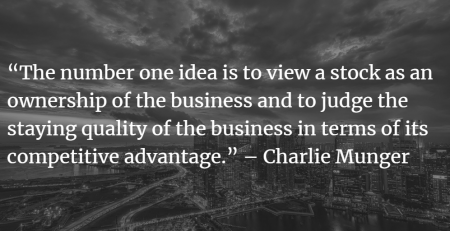This is the first of what will be many short investment summaries that we will be posting on our site. Our goal here is to give you a very brief snapshot of our investment rationale. These short summaries are condensed versions of much longer internal documents that take months of research and analysis to produce.
Business Description
CarMax is the largest used car retailer in the United States. The original idea for CarMax was conceived at Circuit City, while it was dreaming up other concepts to which it could apply its big-box-retailer concept. The automotive sector was identified due to its large size, fragmented nature, and reputation for poor consumer satisfaction (to this day, Gallup surveys find that car salespeople are rated as the least trustworthy profession, right behind members of congress).
From the beginning, the value proposition at CarMax was to offer unsurpassed inventory, certified to meet high quality standards, sold at fixed prices, with no haggling, and transparent financing. CarMax salespeople are paid commissions on a fixed dollars-per-unit basis which means they have no incentive to push customers toward a higher priced vehicle, nor to up-sell the customer into inappropriate financing and extras.
This has created a less adversarial environment, where a CarMax customer works with the same salesperson throughout the whole transaction, does not have to engage in any uncomfortable haggling, can be confident the vehicle is mechanically sound and isn’t passed off to a separate finance manager to conclude the transaction. The process is transparent, with the customer seeing the same information on screen as the CarMax salesperson. All of this is designed to take the anxiety and stress out of the used car buying process.
There is another key benefit for a CarMax customer- the ability to sell a trade-in vehicle to CarMax regardless of whether one purchases a vehicle. In fact, CarMax spent much of their first 5 years in business saying nothing other than “we will buy your car.” They rarely even mentioned that they sold cars as well. The beauty of this was that it allowed CarMax to create the lowest cost vehicle acquisition channel in the industry, which has subsequently led to industry leading gross margins on a standardized basis (different auto companies include different things like high margin financing and repairs in their gross margin numbers).
CarMax further monetizes their low-cost vehicle acquisition channel by running a profitable and efficient wholesale auction to move inventory that doesn’t meet the standards of their CarMax branded dealerships. CarMax currently runs the third-largest wholesale auction business in the United States, which allows them to move inventory very quickly, reducing the inventory risk that other dealerships face.
Combining the cheapest acquisition channel in the industry with the most efficient wholesale channel has created a powerful feedback loop, that has allowed CarMax to out-scale the competition. CarMax can self-finance operations, advertise nationally, and reduce their operating costs as a percent of revenue.
This scale brings another benefit- that CarMax have considerably more and more detailed information than any other retailer- they know what cars are selling where, in which models, which colors, which towns, etc. This allows them to not only price their cars to sell more accurately, but also ensure they are buying at appropriate prices. This data advantage is significant compared to their competition.
Others have tried and failed to replicate the CarMax model. Their dominant position in such a fragmented market is a huge hurdle to overcome. To give you a flavor for just how fragmented this market is (and how much runway for growth is left)- CarMax is more than double the size of their closest competitor yet still have only a 3% share of the total used car market.
Investment Thesis
In the long-run, what we are betting on with CarMax is a compelling and profitable unit growth story with a clear path to double its store base, while more than doubling its earnings over the next decade.
The CarMax story is often misunderstood by the market due to the muddled picture painted by the accounting treatment at CarMax Auto Finance. At first glance, CarMax looks like a heavily indebted company with nil to negative cash flow. This is especially bad when the entire growth story is dependent on access to capital to build out new stores. But with some work, one can discover that the economic reality is almost the complete opposite. The difference lies with a significant accounting change made back in 2010.
From CarMax’s 10-K for the fiscal year ended February 28, 2010: “When presented in our consolidated financial statements beginning in the first quarter of fiscal 2011, the assets and liabilities of the securitization trusts will be separately presented on the face of the consolidated balance sheet, as required by ASU 2009-17, to reflect the fact that trust assets can be used only to settle trust obligations and that the trusts’ creditors (or beneficial interest holders) do not have recourse to the general credit of CarMax.”
In other words, more than $12B of the debt that appears on CarMax’s balance sheet is non-recourse, meaning that CarMax shareholders are not on the hook if those loans go bad. As CarMax is not liable for this debt, we can adjust the balance sheet to account for this anomaly. Adjusting for this, paints an entirely different picture of a company producing more cash than they know what to do with, which has historically been returned to shareholders in the form of share buybacks. They currently have a buyback plan authorized to buyback around 10% of the entire market capitalization of the company. They could use this cash to grow much faster, but the conservatism of the management team keeps a lid on growth- whilst they could afford to expand much more quickly, they are choosing to safely moderate the pace and continue to buyback shares.
The market also misunderstands CarMax’s subprime auto loan exposure- this is very commonly called out in investment commentary and you often see the shares sell off when there is a news article talking about subprime loan defaults increasing. CarMax themselves do not actually take any subprime auto loan exposure on their books- rather, they simply pay $1,000 per vehicle to pass the risk on to a third party. As a result, CarMax auto finance income remained positive even during the depths of the 2008 financial crisis. So, even though a downturn in the credit cycle would hurt sales in the short-term, it wouldn’t damage the long-term story.
As far as valuation, using a multi-stage discounted cash flow model driven by new store opening economics (which we can forecast with reasonable certainty), we can easily justify a stock price above $85. If management, who have proven to be very prudent and methodical in building CarMax, execute on their growth plans as they have done historically, we expect earnings at the firm to continue to grow at double-digit rates for many years to come despite whatever market volatility occurs in the short-run.






